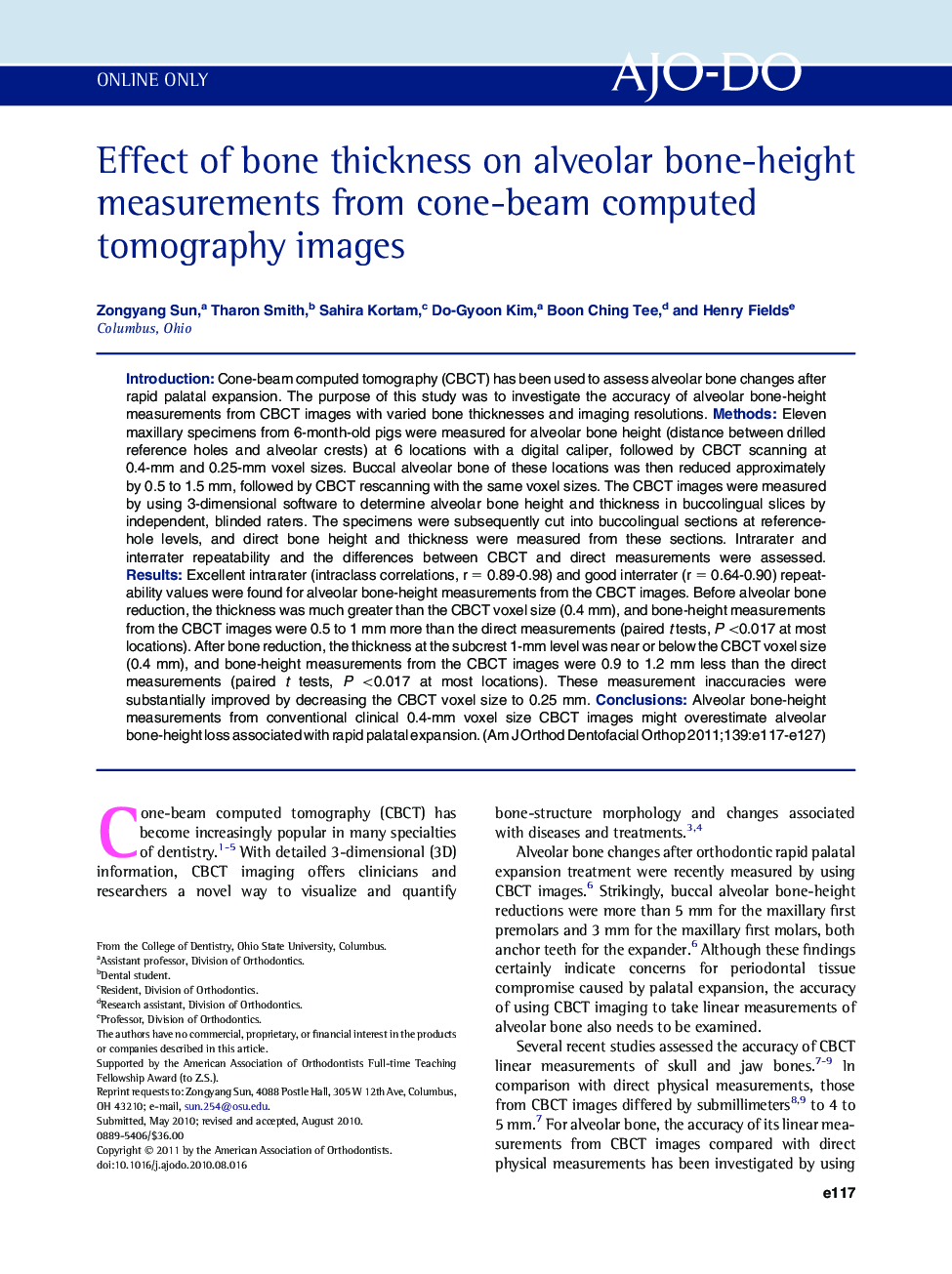| Article ID | Journal | Published Year | Pages | File Type |
|---|---|---|---|---|
| 3117788 | American Journal of Orthodontics and Dentofacial Orthopedics | 2011 | 11 Pages |
IntroductionCone-beam computed tomography (CBCT) has been used to assess alveolar bone changes after rapid palatal expansion. The purpose of this study was to investigate the accuracy of alveolar bone-height measurements from CBCT images with varied bone thicknesses and imaging resolutions.MethodsEleven maxillary specimens from 6-month-old pigs were measured for alveolar bone height (distance between drilled reference holes and alveolar crests) at 6 locations with a digital caliper, followed by CBCT scanning at 0.4-mm and 0.25-mm voxel sizes. Buccal alveolar bone of these locations was then reduced approximately by 0.5 to 1.5 mm, followed by CBCT rescanning with the same voxel sizes. The CBCT images were measured by using 3-dimensional software to determine alveolar bone height and thickness in buccolingual slices by independent, blinded raters. The specimens were subsequently cut into buccolingual sections at reference-hole levels, and direct bone height and thickness were measured from these sections. Intrarater and interrater repeatability and the differences between CBCT and direct measurements were assessed.ResultsExcellent intrarater (intraclass correlations, r = 0.89-0.98) and good interrater (r = 0.64-0.90) repeatability values were found for alveolar bone-height measurements from the CBCT images. Before alveolar bone reduction, the thickness was much greater than the CBCT voxel size (0.4 mm), and bone-height measurements from the CBCT images were 0.5 to 1 mm more than the direct measurements (paired t tests, P <0.017 at most locations). After bone reduction, the thickness at the subcrest 1-mm level was near or below the CBCT voxel size (0.4 mm), and bone-height measurements from the CBCT images were 0.9 to 1.2 mm less than the direct measurements (paired t tests, P <0.017 at most locations). These measurement inaccuracies were substantially improved by decreasing the CBCT voxel size to 0.25 mm.ConclusionsAlveolar bone-height measurements from conventional clinical 0.4-mm voxel size CBCT images might overestimate alveolar bone-height loss associated with rapid palatal expansion.
